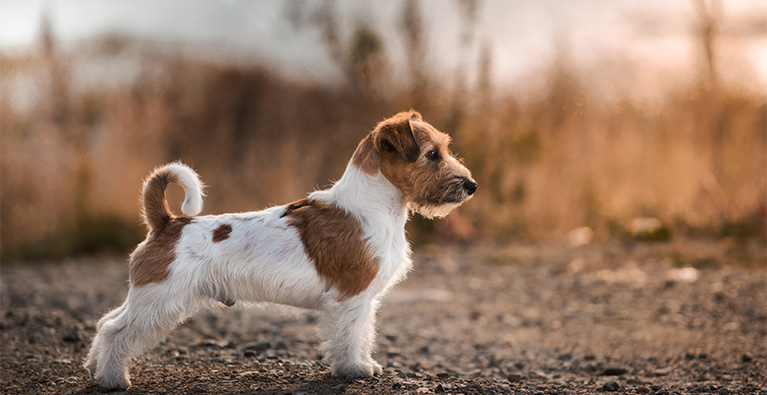Back pain in dogs
Back problems are relatively common in dogs. They can be very painful, so they should be identified and treated in good time.
Causes of back problems in dogs
Back pain is not only a burden for many people, but also for dogs. It is caused by changes in the bones or muscles. This can be due to a variety of factors and a diagnosis should be carried out by a vet. The reasons for back pain in dogs can include the following:
- Breed
Dogs with long backs are particularly susceptible to back pain. It is with good reason that a slipped disc is also referred to as dachshund paralysis, because dachshunds are affected more frequently than other breeds. Back problems are, however, also known to occur in Bassets, Pekingese, Lhasa-Apsos, Terriers, Corgis, Spaniels and French and English Bulldogs.
However, large dogs as well as smaller breeds can suffer from back pain. This may be caused by an unstable lower cervical spine. The so-called Wobbler syndrome occurs in, among other breeds, Great Danes, Dobermans and Rottweilers.
- Weather
Short-coated dogs such as Boxers, Dobermans, Greyhounds and Pharaoh Hounds with little to no undercoat are much more sensitive to the cold than those with longer coats. Hairless breeds are a particular example due to their lack of coat. Not only does this mean that dogs with little or no hair can get cold and infected more quickly, but it can also cause back problems.
- Overexertion
Sport is beneficial for humans and animals, but only up to a certain limit. Particular care should be taken with puppies and young dogs. Only when they are fully grown is their bone structure sufficiently mineralised and therefore hardened and able to withstand greater pressure. But even then, depending on the breed of dog, it is important to be considerate. It is, for example, by no means the case that all dogs have the right prerequisites to run long distances next to a bicycle. In addition, breeds that are known to have back problems should avoid climbing stairs too often, jumping into the car or onto the couch, and engaging in strenuous dog sports.
- Organ disorders
In cases of back pain, it is also important to consider whether this could be due to an organ disorder. If, for example, a dog has kidney, bladder or gastrointestinal issues, or if it has a prostate or uterine condition, the pain can radiate to the back and cause tension.
- Diet
With home-cooked or home-mixed food, an excessive supply of vitamin A can lead to joint stiffness around the cervical spine. This is known as ankylosis. An insufficient supply of calcium or vitamin D will lead to inadequate mineralisation of the bones. Sudden jerky movements and falls can lead to fractures in the cervical spine, with pain radiating into the back.

Symptoms of back pain in dogs
When a dog has back problems, it can be very painful. A vet should therefore be consulted as soon as possible. The following symptoms can indicate back problems in dogs:
- arched back
- wincing when the back is touched
- reduced activity
- movement disorders
- licking or biting of joints
- yelping when moving
- signs of paralysis
- dragging of paws
- problems with defecating
- incontinence
- trembling of the legs
- loss of balance
- difficulty getting up
- avoiding jumping
- changes in behaviour
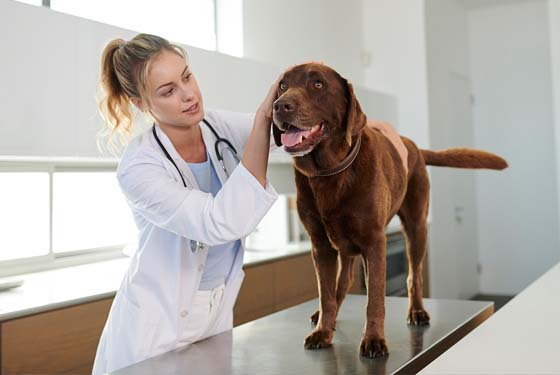
Diagnosis and therapy of back problems
Because of the many causes that can be responsible for back problems in dogs, a comprehensive diagnosis should be carried out by a vet. In addition to a thorough general examination, information from the pet owner can also be a great help. The vet will then decide how to proceed. A so-called lameness exam is usually carried out. Here, the vet looks for irregularities in the dog’s gait. In order to be able to confirm any suspicions, an X-ray diagnosis is usually then required. In addition, it may be necessary to conduct neurological examinations. Computer tomography or magnetic resonance imaging may also be required.
The therapy is based on the individual diagnosis. The objective is always to prevent the progression of the condition. Some disorders can be completely cured, while others can only be slowed down and the pain alleviated. These include spondylosis. This describes the wearing down of the discs and ligaments in the spinal column. As a result, the organism attempts to stabilise the spine by means of bony bridges over multiple vertebrae. When the spine bends and these bony bridges rub against each other, it can be very painful. Spondylosis cannot be cured, which is why effective pain management is important. This is also known as symptomatic therapy, which means that only the symptoms are treated, while the actual cause is incurable. It is also important to monitor the inflammatory processes. An operation on the spine is usually only an option if, for example, the spinal canal has become narrowed and the spinal cord is therefore being compressed, leading to symptoms of paralysis.
Relieving and preventing back problems
If a dog has been diagnosed with spondylosis, and also in the case of a number of other disorders that cause back pain, the objective is to alleviate the discomfort and, wherever possible, to prevent it in the future. Here are a few things to keep in mind in your dog’s everyday life:
- Weight of the dog
The more weight a dog has to carry around, the more strain it puts on its back. You should therefore always ensure that your pet is not overweight. This can be caused by too many treats or an excessive amount of food. Talk to your vet and ask whether dietary food (for example as part of an obesity diet) is advisable.
- Limit exercise
If a dog has back problems, it should not have to achieve peak physical performance. This may include jumping into the car or often having to climb a lot of stairs. Depending on the dog’s size, you should lift it into the car, provide a ramp or similar, and carry it up the stairs. Also, the amount of exercise your dog has should be limited. This includes repeatedly chasing after a ball, jumping over obstacles in agility training, fetching frisbees or walking longer distances alongside a bicycle. You should also limit excessive playing or running around with other dogs.
- The dog’s sleeping and resting place
A dog’s bed should not be in a draughty place. It should also be protected from cold from the floor. Making the resting place comfortable for your pet is also important. The bed should be large enough to prevent the dog from having to bend its back into an unnatural position. Special orthopaedic dog beds are often very beneficial.
- A harness instead of a collar
A collar can cause increased strain on the cervical spine, especially if your dog is constantly pulling on its lead or if you often have to keep your dog on a short leash. In such cases, a well-fitting harness is much gentler on the dog. If the problems are more in its back, a wide, well-padded collar can be recommended, because a harness partly rests on the dog’s spine.
- A wide variety of treatment options
In addition to conventional treatment, homeopathic therapy and physiotherapeutic treatment can also be very effective. These include massages, heat treatment, and the use of an underwater treadmill.
- Modified walks
Wet autumn days and cold winter weather are not helpful if your dog has back problems. However, going for walks is, of course, necessary. You should therefore plan shorter walks without any extended breaks in which your dog could become too cold. To avoid this, an appropriate dog coat for the particular breed is also advisable. If your dog still gets wet, it should be dried off at home with a towel or a hairdryer.
You may also like this
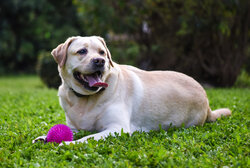
Excess weight in dogs
Obesity causes a variety of health problems
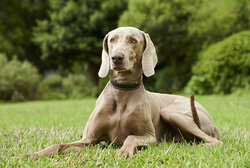
If your dog is limping
Any lameness should be examined by a vet as soon as possible
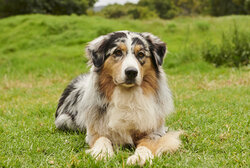
Allergies in dogs
Common allergies and treatment options
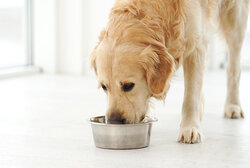
Renal insufficiency in dogs
How to recognise chronic renal insufficiency in your dog
